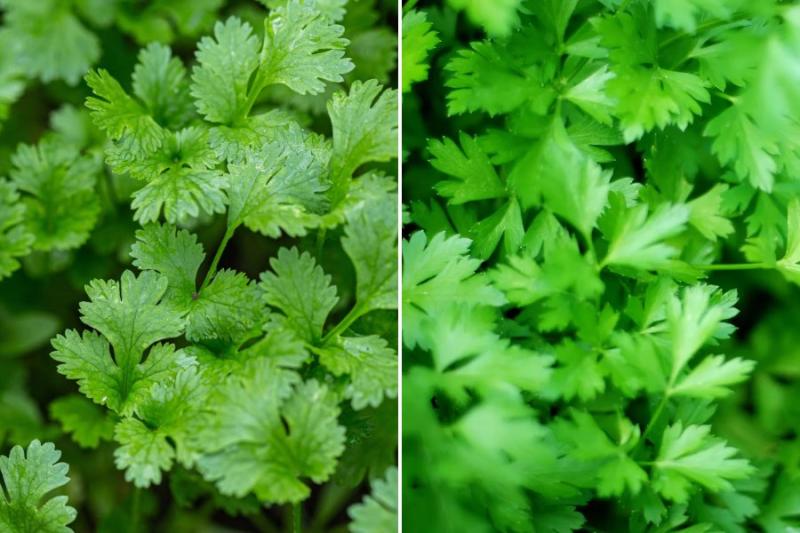Even though cilantro and parsley may look alike, they are two different herbs. Cilantro has a strong, distinct flavour that people often describe as citrusy or pungent. On the other hand, parsley has a more subtle, fresh, and slightly sweet taste. Cilantro is often used in dishes from Latin America, the Caribbean, and Asia, while parsley is often used in dishes from the Mediterranean and Europe.
What is Cilantro?
Cilantro, also known as coriander, is a popular herb in Mexican, Caribbean, and Asian cuisines. Cilantro is a parsley family member frequently used fresh as a garnish or as an ingredient in salads, salsas, marinades, and curries. It has a distinct flavour and aroma can be described as citrusy and slightly sweet. Despite its widespread use in various dishes, cilantro can be a divisive herb, with some people finding its flavour and aroma repulsive. This reaction is thought to be caused by genetic differences in how certain compounds in the herb, such as aldehydes and terpenes, are perceived by people.
Cilantro is a versatile herb with a distinct flavour and potential health benefits, but its intense flavour may not appeal to everyone. Cilantro is also thought to have some medicinal properties. It contains antioxidants, which can help protect cells from damage and inflammation. It also has vitamins and minerals like vitamins C, K, and potassium. Although more research is needed to confirm these effects, some studies have suggested that cilantro may have antibacterial and antifungal properties.
What is Parsley?
The Apiaceae family includes the biennial herb parsley (Petroselinum crispum). It is widely used in traditional medicine and as a culinary herb, particularly in European and Middle Eastern cuisines. Parsley is a bright green herb with a mild, slightly bitter flavour that can be used to complement a variety of dishes. Curly and Italian parsley are the two most common types, with slightly different flavours and textures. Curly parsley is more decorative and is frequently used as a garnish, whereas Italian parsley has a more robust flavour and is commonly used in cooking.
Parsley is high in vitamins and minerals such as vitamins K and C, potassium, and iron. It is also high in antioxidants and has anti-inflammatory and antimicrobial properties. Parsley has been used in traditional medicine to treat various ailments, including digestive issues, menstrual pain, and urinary tract infections. Parsley can be used in various dishes, including sauces, marinades, and dressings, as well as as a garnish for soups and stews. It is frequently used in dishes to add a fresh, bright flavour, and it can be combined with other herbs and spices to add complexity.
Difference Between Cilantro and Parsley
Cilantro and parsley are commonly used herbs in cooking but differ in appearance, flavour, and application. Cilantro, also known as coriander, has a strong and spicy flavour with citrus notes and delicate, feathery leaves. Conversely, parsley has a milder, slightly bitter taste and flat, serrated leaves.
In Latin American, Mexican, and Indian cuisine, cilantro is commonly used to add flavour and freshness to dishes such as salsa, guacamole, and curries. In Mediterranean and Middle Eastern cuisine, parsley is used to flavour dishes such as tabbouleh, salads, and soups. Because of its vibrant green colour, parsley is also used as a garnish.
Another distinction between cilantro and parsley is their nutritional value. Cilantro is high in vitamins C, K, and potassium, whereas parsley is high in vitamins K, C, and A. While cilantro and parsley are versatile herbs, they differ in flavour, appearance, and culinary applications.






